July 4, 2024
The Panacea Museum

The Panacea Museum was once the home of Joanna Southcott. It still houses her box of revelations.
The house is a wonderful example of middle-class Victorian life, but her box and her preachings were the most interesting to me.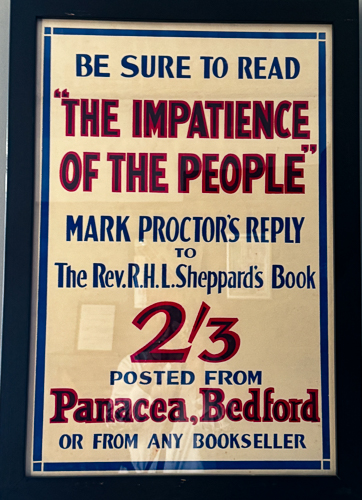 *
*

Joanna Southcott was born in 1750 and began having religious visions around the age of 42, believing that she had supernatural contact with God and was the woman spoken of in the Book of Revelation. By the time of her death, it is said that she had nearly 100,000 followers; however, it was not her following that would be her lasting legacy, but the sealed box of visions she left behind.
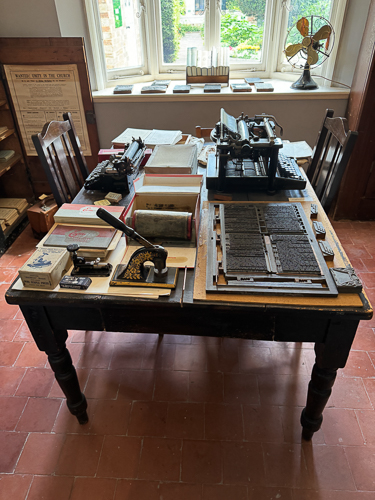
*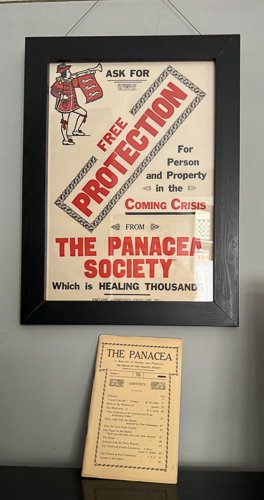
Before she died, Southcott collected what is believed to have been a number of her visions that would help save her followers. She sealed these things in a box that was not to be opened until a time of “national crisis.” The contents of the box were to be shown only to the 24 (in Southcott’s time) bishops of the Church of England, who were then to study the findings for a full seven days. No one knows what is truly in the box.
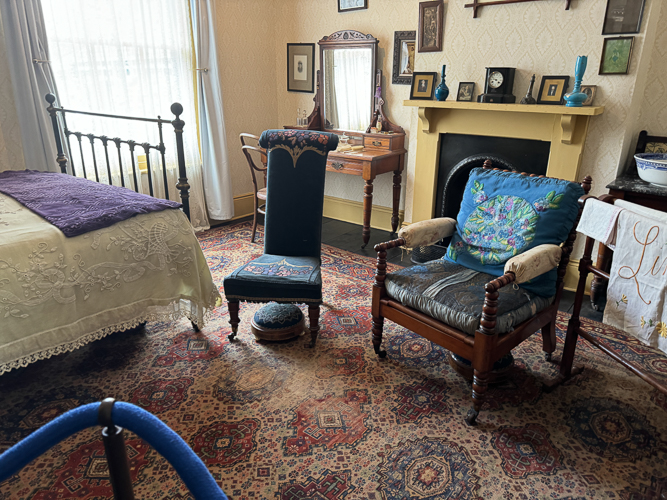
*
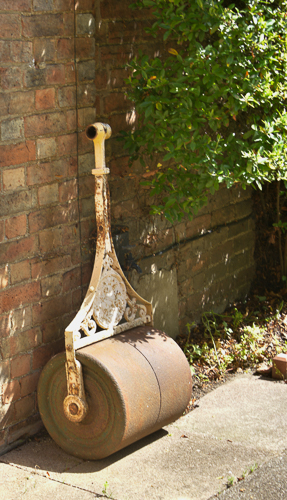
In the yard was this roller to deal with DG pathways, I love them, and you do not see them very often.
The Higgins Art Museum
The Cecil Higgins Museum, as it was formerly known, opened in July 1949. It was originally in the house built in 1846 as the home of Charles Higgins (1789–1862) next to the Higgins & Sons Brewery.
The Gallery holds over 200 pieces from the collection of Charles Handley-Read and his wife Lavinia, an impressive collection of Victorian items.
My favorite pieces of the collection is furniture by William Burges. Burges was an English architect and designer. Considered to be one of the greatest Victorian art-architects. He stands within the tradition of the Gothic Revival, while his works echo those of the Pre-Raphaelites and herald those of the Arts and Crafts movement.
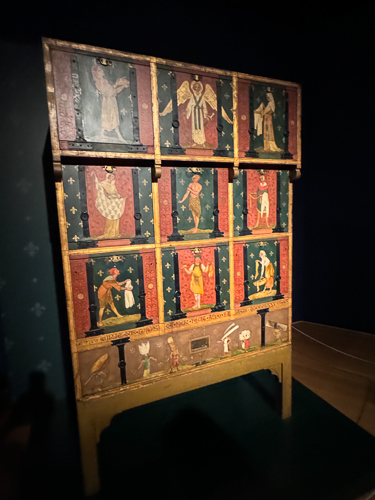
William Burgess Dresser
The dresser shows Adam being expelled from the Garden of Eden and being handed a piece of clothing by each figure on the front of the chest.
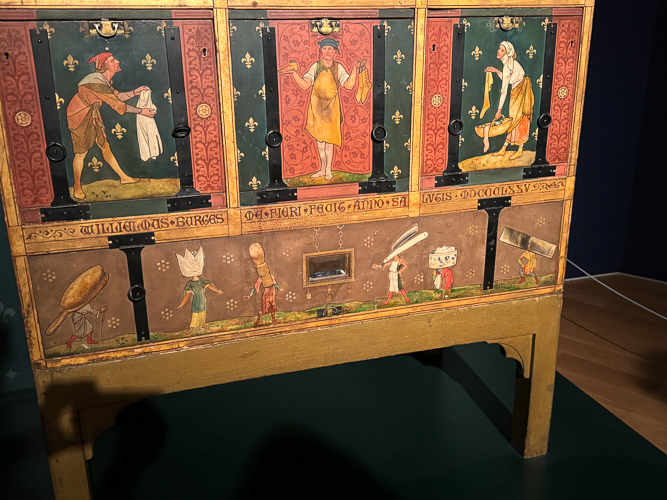
On the bottom, a shaving kit has taken on anthropomorphic shapes
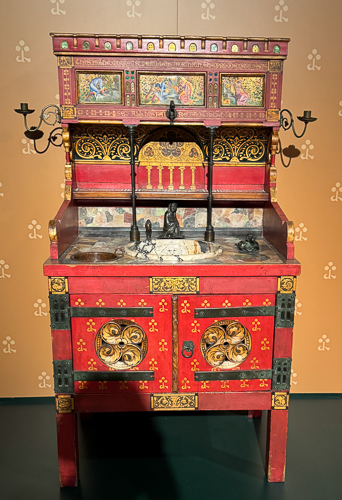
The Narcissus Washstand
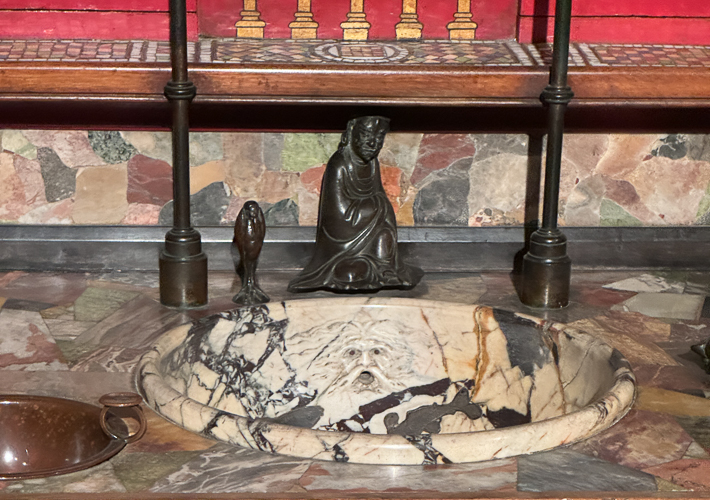
The spigot and bowl of the Narcissus Washstand
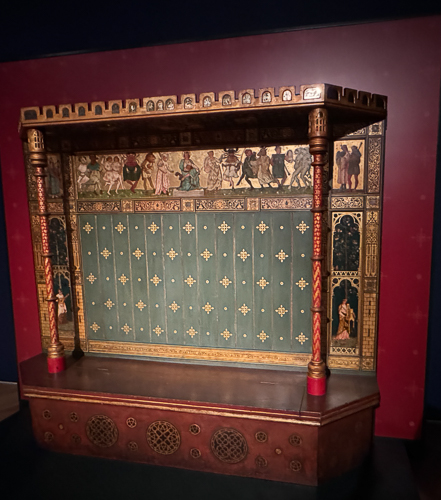
The Zodiac Settle
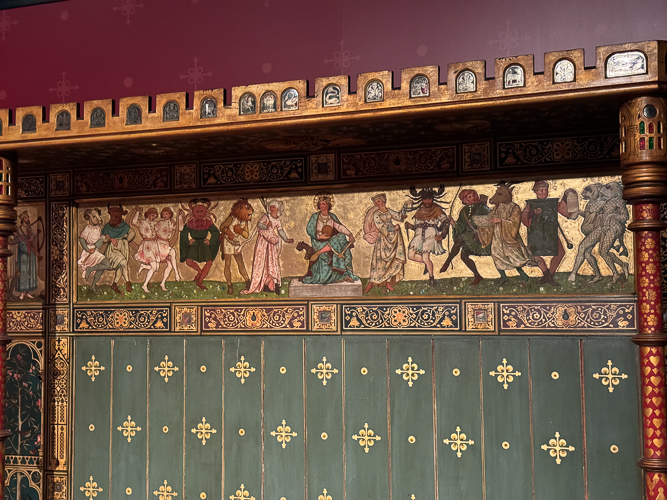
A few other pieces of the collection I found charming

This teapot was designed in 1881 by the Royal Worcester Porcelain Factory and is the ultimate caricature of the Aesthetic movement and its followers. The teapot embodies both a male and female Aesthete in typical Aesthetic dress, with their joined heads as the lid, bent arms as the handle and limp-wristed hands becoming the spout.
Both sides of the teapot feature motifs commonly associated with the Aesthetic movement, namely the sunflower and the lily, with the green tones of their dress likely to be a deliberate reference to ‘greenery-yallery, Grosvenor gallery’, a line from the 1881 Gilbert and Sullivan opera ‘Patience’, itself a satire of the Aesthetic movement.
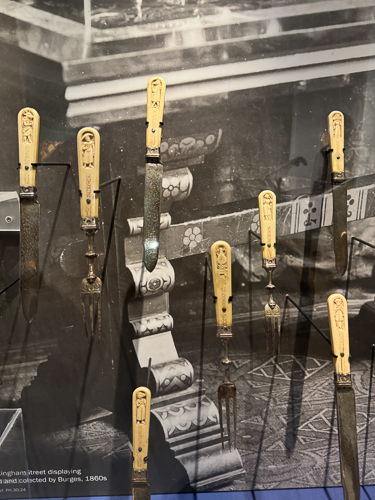
Ivory handled cutlery
Going to Bedford, England, to visit two small museums is probably not on everyone’s to-do list. But if you are in the area, they are both absolutely worth a visit.